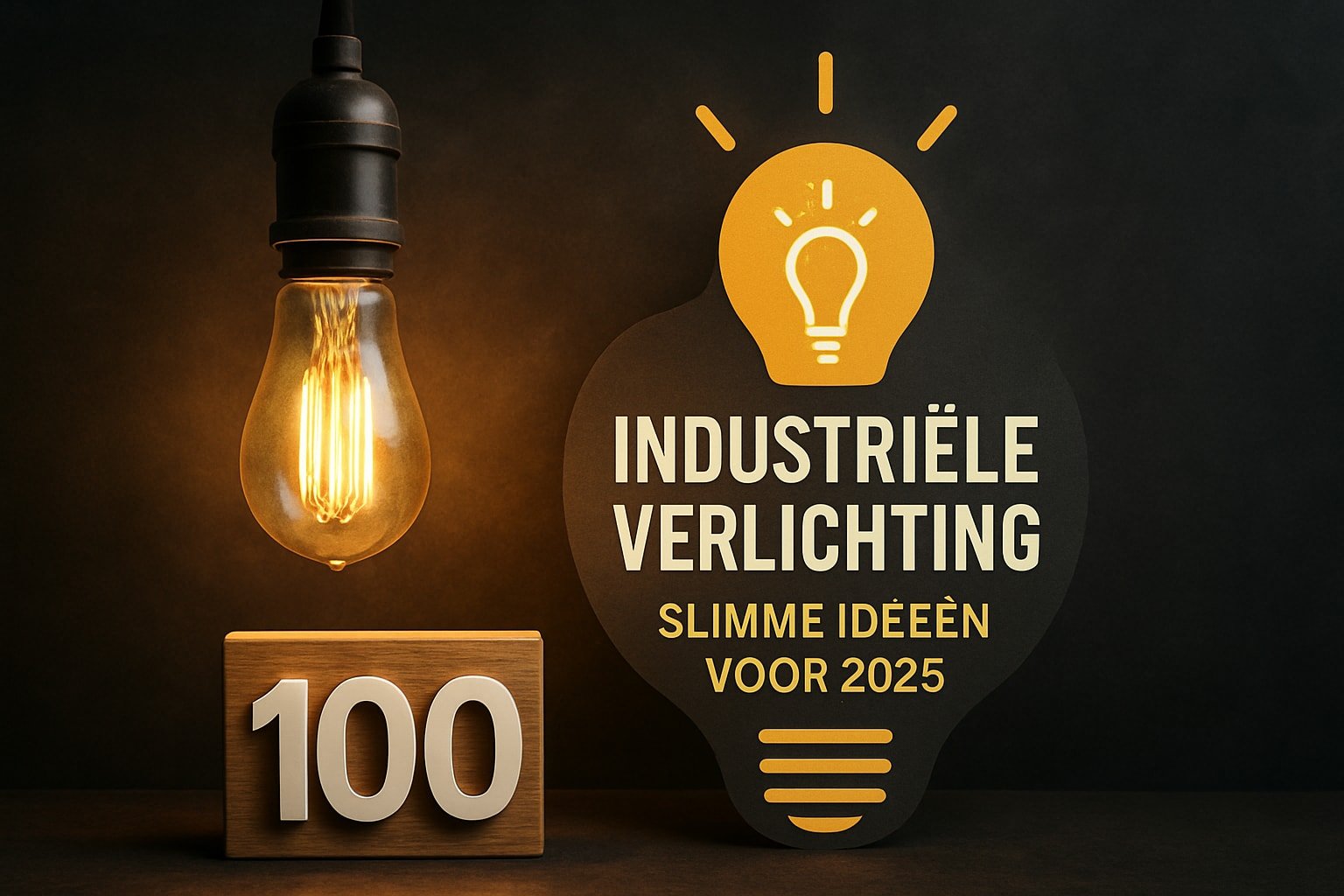Industrial lighting is more popular than ever in 2025. More and more companies are discovering the power of this tough and functional style. What makes industrial lighting so attractive and future-proof?
This article shows how you can take your own work or business space to the next level with smart and innovative ideas. We discuss seven surprising trends, from smart LED systems to sustainable materials.
Get inspired by practical solutions and discover how to get a head start on tomorrow's trends with industrial lighting.
Industrial Lighting in 2025: Trends & Innovations
The world of industrial lighting is undergoing a true transformation in 2025. Innovation and technology are growing together, giving companies access to solutions that go beyond purely functional light. Where efficiency was previously the focus, the focus is now shifting to sustainability, smart control and aesthetic design. Companies are investing massively in lighting systems that not only save energy, but also contribute to a healthy, inspiring work environment.
According to recent market analyses, the European industrial lighting market is growing at an annual rate of more than 8%. This growth is driven by stricter regulations, rising energy prices and increasing demand for environmentally friendly solutions. LED technology remains the standard, but is increasingly combined with advanced sensors and automation. Those interested in delving further into these developments can visit the overview of lighting trends 2025 for businesses.
Sustainability is the key word in industrial lighting for 2025. More and more companies are opting for luminaires made of recycled metal or glass. These materials reduce the carbon footprint and give the interior a unique character. Stricter energy efficiency requirements are also being imposed, leading manufacturers to focus on products with longer lifespans and lower maintenance costs.
Another undeniable trend is the integration of smart home systems and Internet of Things (IoT) into industrial lighting. Smart lighting systems can be controlled via apps or building management systems. This makes it possible to fully adjust light intensity, color temperature and even lighting scenarios according to the time of day or activities in the room. This creates a dynamic work environment that supports both comfort and productivity.
In addition to smart technology, design is playing an increasingly important role. In modern industrial interiors, we see a combination of robust materials and clean lines, where lighting is both functional and decorative. Adjustable light intensity and color temperature offer flexibility, while striking luminaires contribute to the company's brand identity.
Finally, there are numerous real-world examples of companies at the forefront of this evolution of industrial lighting. From distribution centers that have reduced their energy consumption by more than 50% thanks to smart LED systems, to creative offices where recycled lamps add character to the interior. The future of industrial lighting is sustainable, smart and, above all, inspiring.
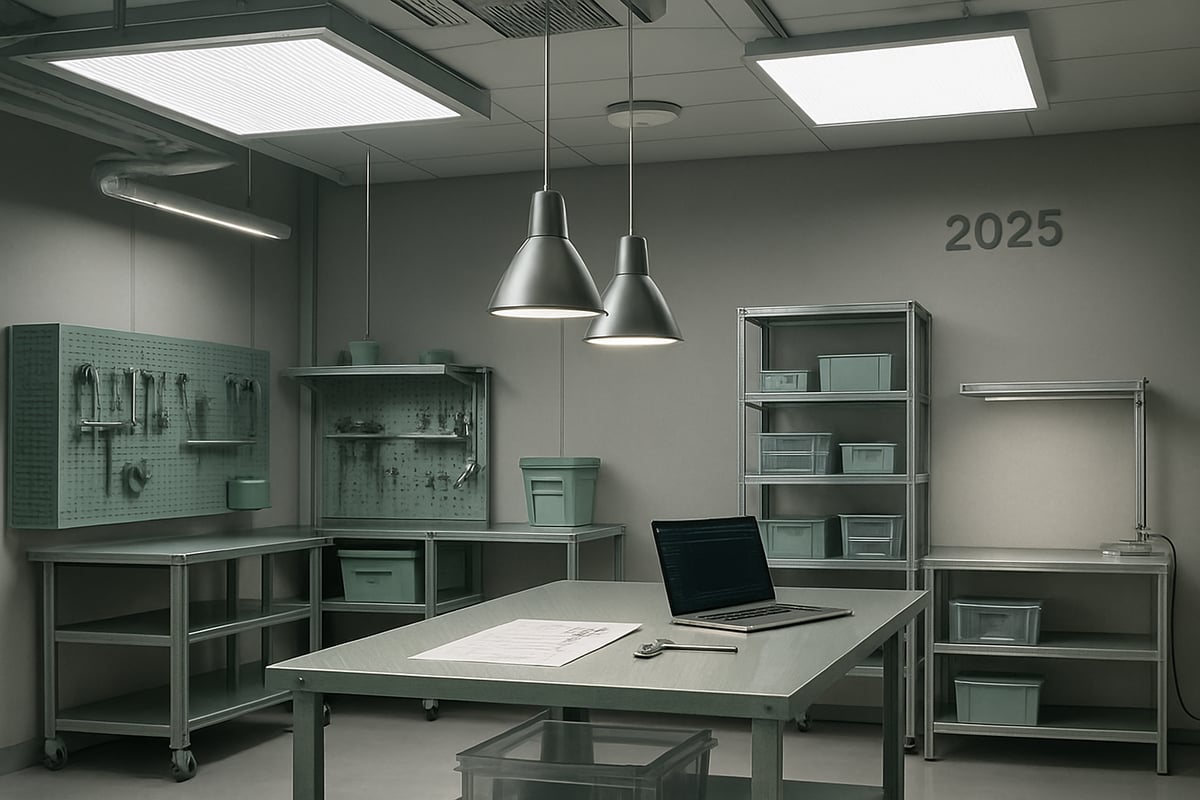
7 Smart Ideas For Industrial Lighting In 2025
The world of industrial lighting is changing rapidly. Innovation is the key to a future-proof and efficient work environment. Here are seven smart ideas that will make a difference in 2025 for companies looking to invest in optimal lighting.
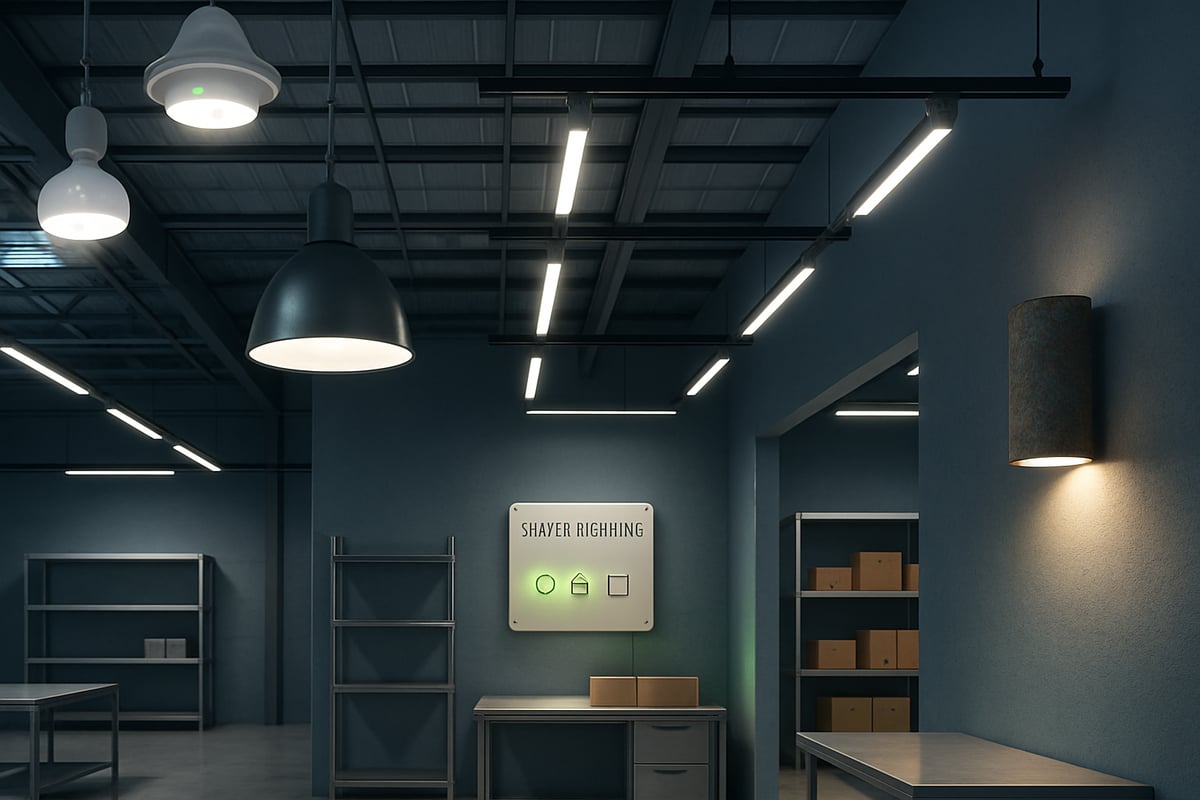
1. Smart LED Lighting with Motion Sensors.
Smart LED lighting with motion sensors is one of the most efficient solutions within industrial lighting. These systems automatically respond to presence and motion, leaving light on only when and where it is needed.
This type of industrial lighting provides significant energy savings. According to recent studies, up to 60% can be saved on energy consumption. Motion sensors are especially suitable for warehouses, production areas and offices where rooms are not continuously occupied.
Advantages:
- Increased safety through instant illumination upon movement
- Lower energy costs through reduced unnecessary use
- Less maintenance thanks to extended life of LEDs
Disadvantages:
- Initial investment is higher than for conventional lighting
- Sensors may be susceptible to malfunction or faulty detection
Examples of brands offering this technology include Philips, Osram and Trilux. Their systems can often be integrated with existing smart home or building management systems.
The combination of LED technology and smart sensors fits perfectly with the trend of automation and sustainability. For more information on smart LED solutions, sensors and automation, check out Smart LED lighting solutions.
In addition, this industrial lighting offers flexibility for a variety of spaces. Think of production halls where safety is a priority or storage areas where light is only needed temporarily. Energy savings and ease of use make this solution attractive to any modern business.
2. Industrial Pendant Lamps with Dimmable Function
Industrial pendant lamps with dimmable function are not only an eye-catcher, but also offer a functional advantage in industrial lighting. With dimmable lamps, light intensity can be easily adjusted to suit the moment and space.
This flexibility allows you to create atmosphere in canteens, meeting rooms or showrooms while opting for maximum brightness during the day. Popular models include metal cage lamps, vintage fixtures and minimalist designs that suit industrial interiors.
Advantages:
- Flexible light adjustment for a variety of situations
- Saving energy by reducing brightness where possible
- Longer lamp life due to less intensive use
Disadvantages:
- Additional installation of dimmers and compatible fixtures required
- Sometimes higher purchase price compared to standard lamps
This form of industrial lighting contributes to employee comfort and productivity. In multifunctional spaces, lighting scenes can be easily adjusted. This is ideal for companies that combine different activities in one room.
When choosing dimmable lighting, it is important to pay attention to lamp and dimmer compatibility. Modern systems often offer smart control via apps, making it easy to set the right mood. Combining design and functionality will make this solution popular in 2025.
3. Modular Track Lighting for Flexible Workplaces.
Modular track lighting is an excellent choice for companies that want flexibility in industrial lighting. These systems allow you to easily move, add or remove fixtures depending on the layout of the shop floor.
In dynamic environments, such as production halls or logistics centers, the layout changes frequently. Modular track lighting allows targeted light to be placed where it is needed, without major ceiling or wiring modifications.
Advantages:
- Scalability for growing businesses
- Easy assembly and expansion
- Targeted lighting at workstations or machines
Disadvantages:
- Higher initial purchase price than fixed systems
- Planning is required for optimal layout and light distribution
Examples of modular systems include the Global Trac Pro system and ERCO rails. These offer great freedom in the placement of spotlights and pendant luminaires. This type of industrial lighting can be easily adapted to changing production processes.
A table to summarize the benefits of modular track lighting:
| Feature | Modular Rail Lighting | Traditional Lighting |
|---|---|---|
| Flexibility | High | Low |
| Installation ease | Simple | Complex |
| Cost (initial) | Higher | Bearing |
| Adaptability | Excellent | Limited |
For companies committed to growth and adaptation, this industrial lighting is indispensable. It supports an efficient and future-proof work environment.
4. Industrial Outdoor Lighting with Solar Power
Sustainability is at the heart of modern industrial lighting. Outdoor solar lighting combines robust luminaires with integrated solar panels. This makes it possible to illuminate grounds, parking lots and loading bays without connection to the power grid.
With this solution, you not only save on energy costs, but also contribute to lower CO2 emissions. Statistics show that businesses can save up to 80% in outdoor lighting operational costs by switching to solar energy.
Advantages:
- No external power supply required
- Very low operating costs
- Supports sustainability goals
Disadvantages:
- Dependent on sunlight, less suitable for shady locations
- Higher initial investment for quality systems
Successful implementations can be found at logistics companies and distribution centers that need to illuminate large outdoor areas. The rugged construction allows these fixtures to withstand weather and wind, which is essential for outdoor industrial lighting.
When choosing solar power, consider battery capacity and light output. Modern systems are equipped with smart sensors that automatically adjust light levels according to conditions. This way you make the best use of available energy.
5. Statement Wall Lights from Recycled Materials
Unique sconces made from recycled materials are a notable trend within industrial lighting. They combine sustainability with distinctive design and give any space a unique character.
Think sconces made from recycled metal, old glass or leftover materials from industry. Each fixture tells a story and contributes to a circular economy. This type of industrial lighting is ideally suited for entrance halls, offices and hospitality venues that want to stand out.
Advantages:
- Sustainable and environmentally friendly
- Unique appearance, each fixture is different
- Supports corporate social responsibility
Disadvantages:
- Limited availability, dependent on material flow
- Price may vary due to artisanal manufacturing process
Creative designers work with companies to give residual materials a new life. This results in lamps that are not only functional, but also make a statement about corporate identity.
Integrating this industrial lighting contributes to an inspiring and responsible work environment. Choosing recycled materials shows your company that you take sustainability seriously.
6. Automated Lighting Plans with Smart Controls
Automated lighting plans, controlled via smart controls, are the future of industrial lighting. These systems automatically control light based on time, presence or daylight. Control can be via apps, sensors or integration with building management systems.
IoT technology makes it possible to collect data on the use of lighting. This allows targeted optimization and further energy savings. Large industrial complexes benefit from this approach by centralizing and automating management.
Advantages:
- Maximum efficiency and energy savings
- Easy management, even remotely
- Possibility of data analysis and reporting
Disadvantages:
- Requires technical knowledge for installation and maintenance
- Higher implementation costs than standard systems
Examples include systems from Helvar and DALI, which are known for their integration capabilities. With a smart lighting plan, you can set different zones, program lighting scenarios and predict maintenance.
A good automated system increases comfort and safety within industrial lighting. It makes companies flexible and ready for future developments in lighting technology.
7. Accent lighting for Product Presentation and Safety.
Accent lighting is playing an increasing role in industrial lighting. Focused spotlights and accent lights improve the visibility of products, machinery and walkways.
By strategically placing accent lighting, you not only increase safety in the workplace, but also give products and brand identity more attention. Projects where accent lighting has been used show that employees can orient themselves better and visitors find their way more quickly.
Advantages:
- Increased visibility and safety
- Professional appearance of products and spaces
- Supports branding and customer experience
Disadvantages:
- Additional installation required, possibly higher cost
- Improper use can lead to unnecessary energy consumption
Successful examples can be found in showrooms, production halls and warehouses where clear routing is essential. Accent lighting can easily be combined with other forms of industrial lighting for optimal results.
When implementing, consider using energy-efficient spotlights and matching color temperature to the application. This keeps the lighting not only functional but also aesthetically pleasing.
Practical Tips For Implementing Industrial Lighting
Successfully implementing industrial lighting requires a thoughtful approach. With the right steps, you not only make a visually attractive, but also energy-efficient and future-proof choice. Below you will find practical tips and a clear roadmap to efficiently and effectively integrate industrial lighting into your business environment.
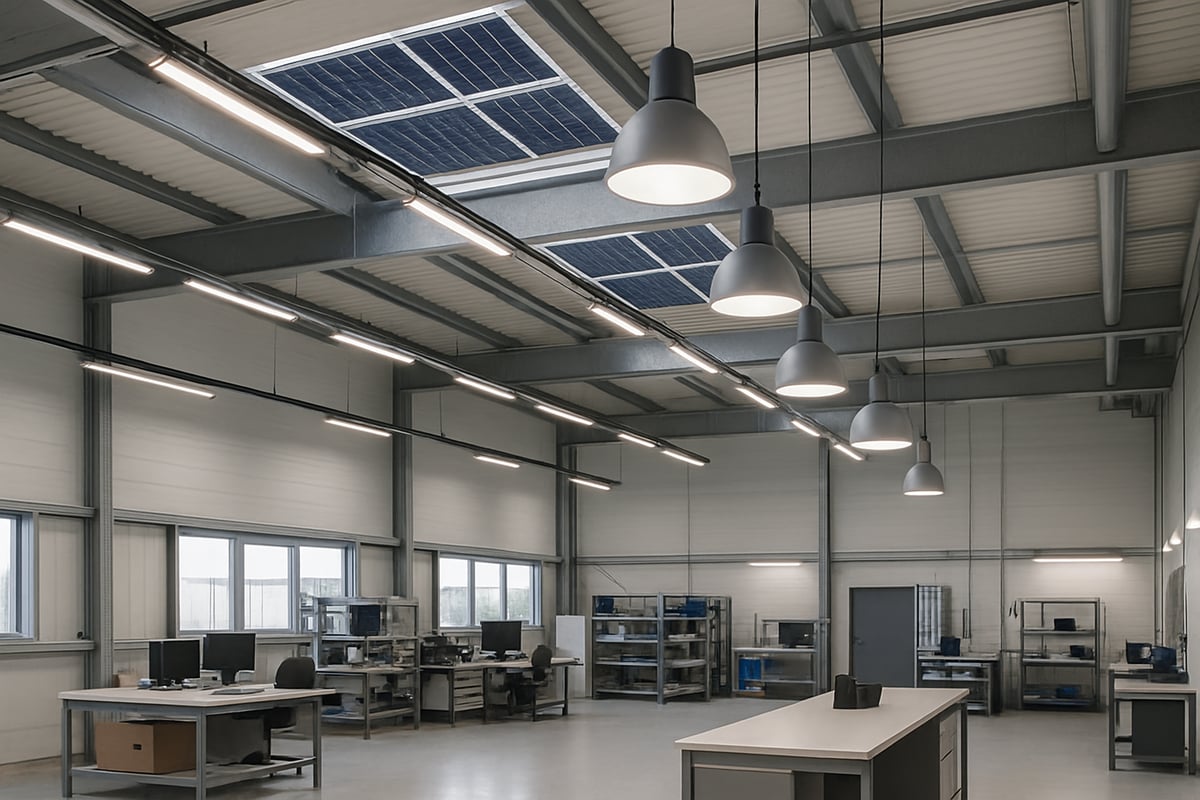
Roadmap for the right choice
A good start is half the battle. Start by taking stock of the wishes and requirements for industrial lighting within your company. Determine which areas need to be lit, what the purpose of the lighting is and what budget is available.
Next, make a comparison of different lighting solutions. Consider modern, energy-efficient options such as LED systems. Consult specialized suppliers for advice and request a lighting calculation if necessary. That way you avoid surprises during installation.
Want to learn more about the possibilities of LED in a business environment? Then take a look at the extensive information on LED lighting for businesses.
The importance of a good lighting plan
A professional lighting plan is the basis for effective industrial lighting. With it, you determine the proper lighting strength, placement and type of fixtures for each room. Have the lighting plan drawn up by an experienced lighting consultant. This prevents blind spots and ensures an optimal balance between functionality and atmosphere.
The lighting plan takes into account daylighting, workplace standards and possible future expansion. Also pay attention to the type of controls, such as sensors or smart controls.
What to look out for in selection
Several factors are important when choosing industrial lighting. Consider the size of the room, the desired light level and the color temperature. Energy consumption plays a big role in the final cost.
In addition, consider ease of maintenance and the lifespan of the fixtures you choose. Preferably choose lighting solutions that are easy to replace or upgrade. Don't forget to check the applicable laws and regulations regarding lighting, for example through this legislation around led lighting.
Grants and tax benefits
Investing in energy-efficient industrial lighting can be financially attractive. In many cases, subsidies or tax breaks are available for companies switching to sustainable lighting. Check with local or national authorities for current regulations. Many suppliers can support you in this regard.
Take advantage of these benefits to shorten the payback period of the investment. Keep good records of all required documentation for any audits or reports.
Avoiding common mistakes
A common mistake with industrial lighting is underestimating the number of fixtures needed or not including maintenance costs in a timely manner. Also, sometimes too little consideration is given to the flexibility of the workspace, making adjustments later costly.
Avoid these pitfalls by discussing scenarios in advance and choosing modular systems. Involve employees in the process; they often know exactly where additional light is needed.
Future-proof implementation
Think ahead when implementing industrial lighting. Choose systems that are scalable and easily upgradable. Smart technologies and IoT integration allow lighting to adapt to changing needs.
Make clear agreements with specialized installers regarding maintenance and updates. This will keep your industrial lighting not only efficient, but also ready for future developments within your company.
Industrial Lighting and Sustainability: Future-proof Choices
Sustainability is at the heart of industrial lighting in 2025. By choosing energy-efficient solutions, such as LED, companies reduce their carbon footprint and save significantly on operational costs.
More and more organizations are seeing immediate results: lower CO2 emissions and a healthier work environment. Examples show that investing in sustainable lighting not only strengthens the environment, but also business operations.
Want to know why switching is smart? Then read 5 reasons to switch to LED and consciously choose innovation and future-proof industrial lighting.
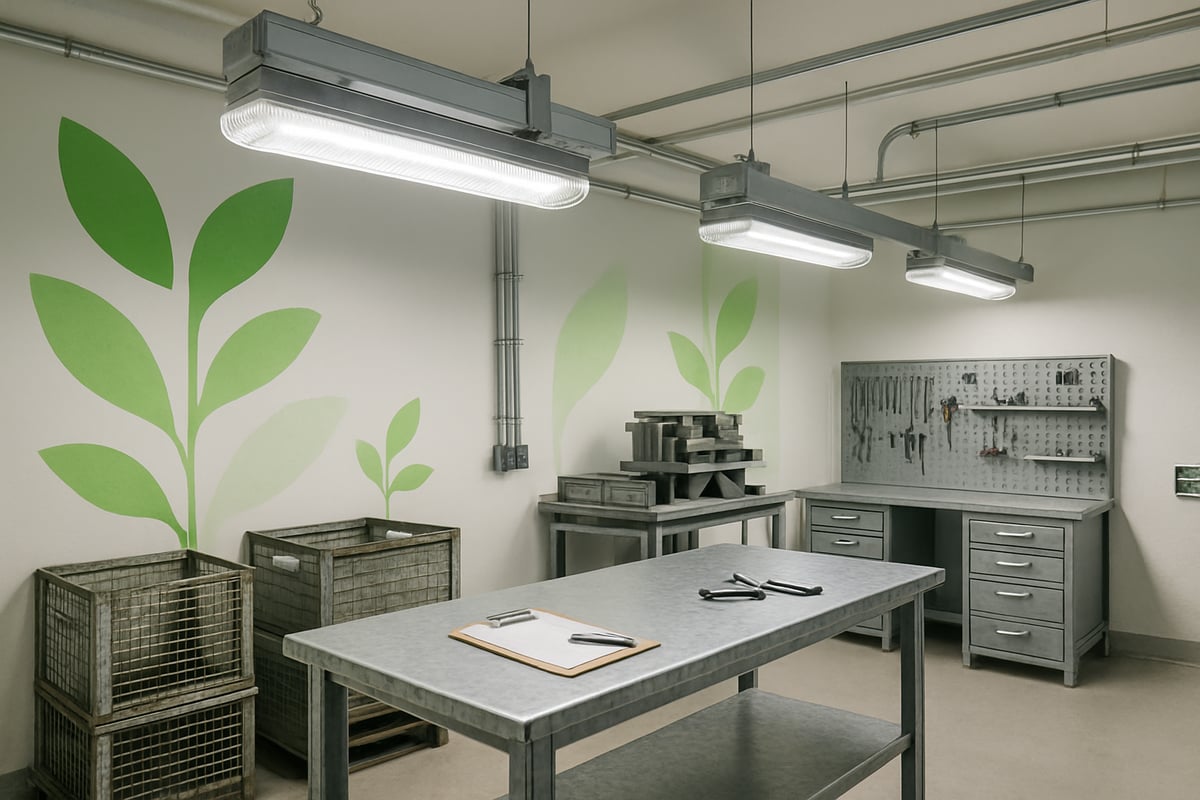
After discovering these seven smart ideas for industrial lighting in 2025, you'll see how much impact the right lighting solutions can have on your business. By choosing energy-efficient and innovative systems, you will not only improve the working environment, but also structurally reduce your energy costs. Would you like to know which solutions best suit your situation and wishes? Together we can look at a lighting plan that really works for your business. Feel free to contact us for personal advice and let us guide you towards a sustainable and efficient future.
Schedule a consultation
